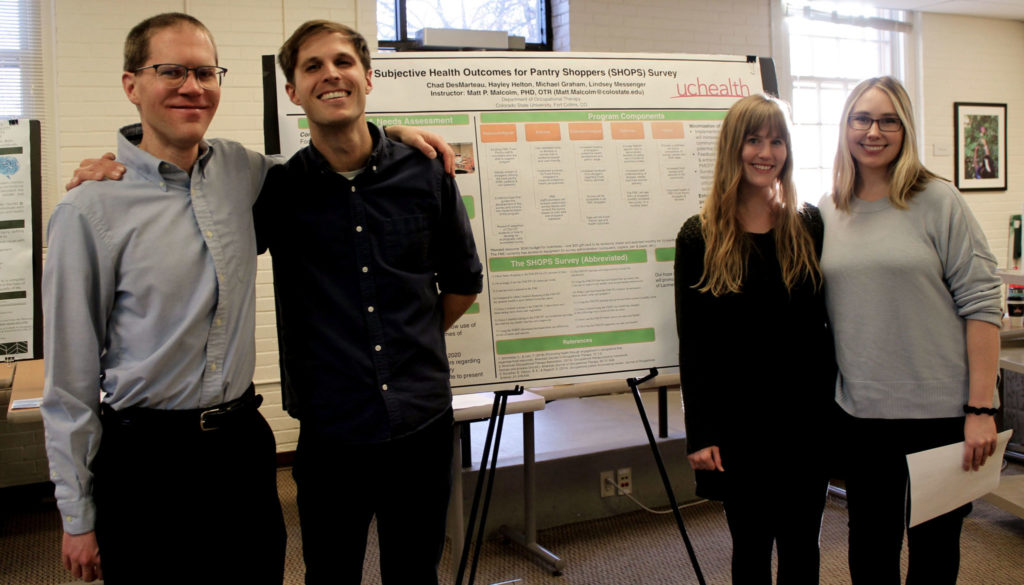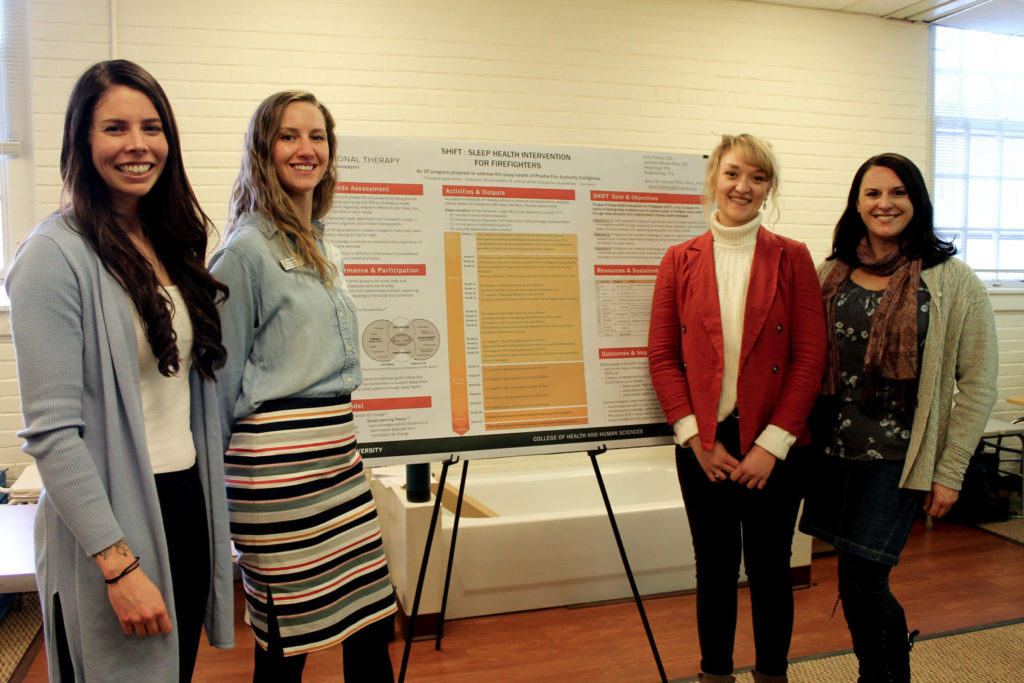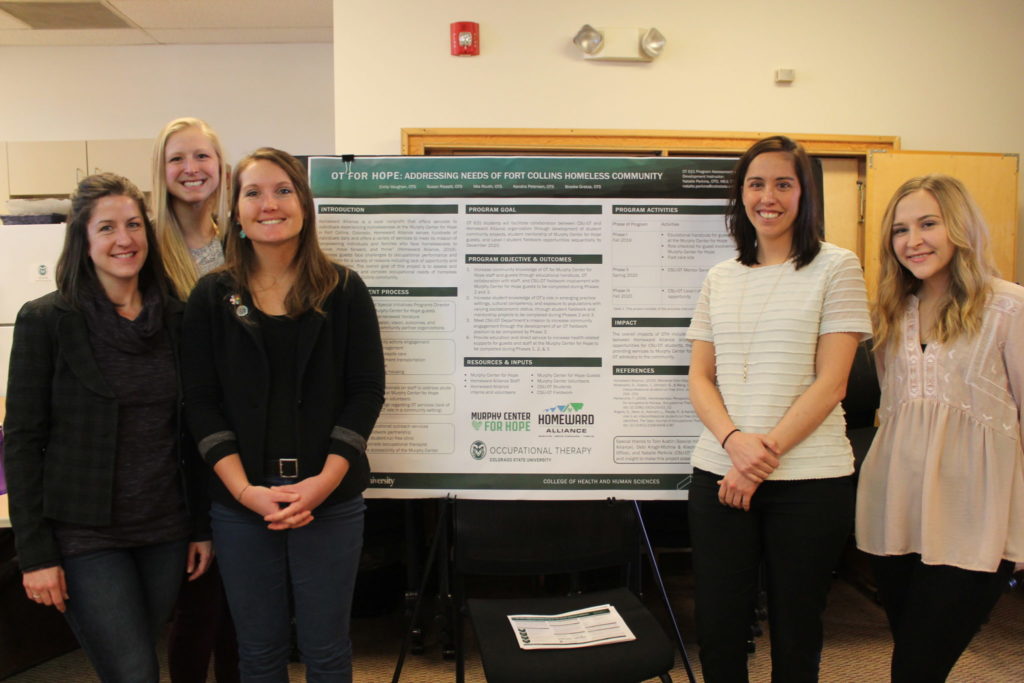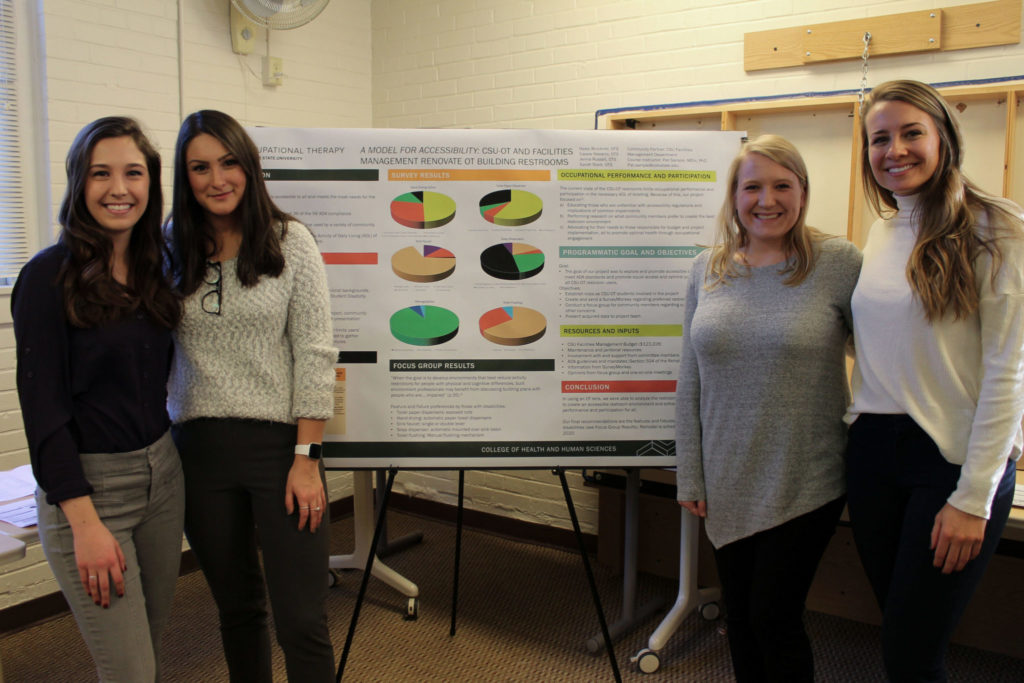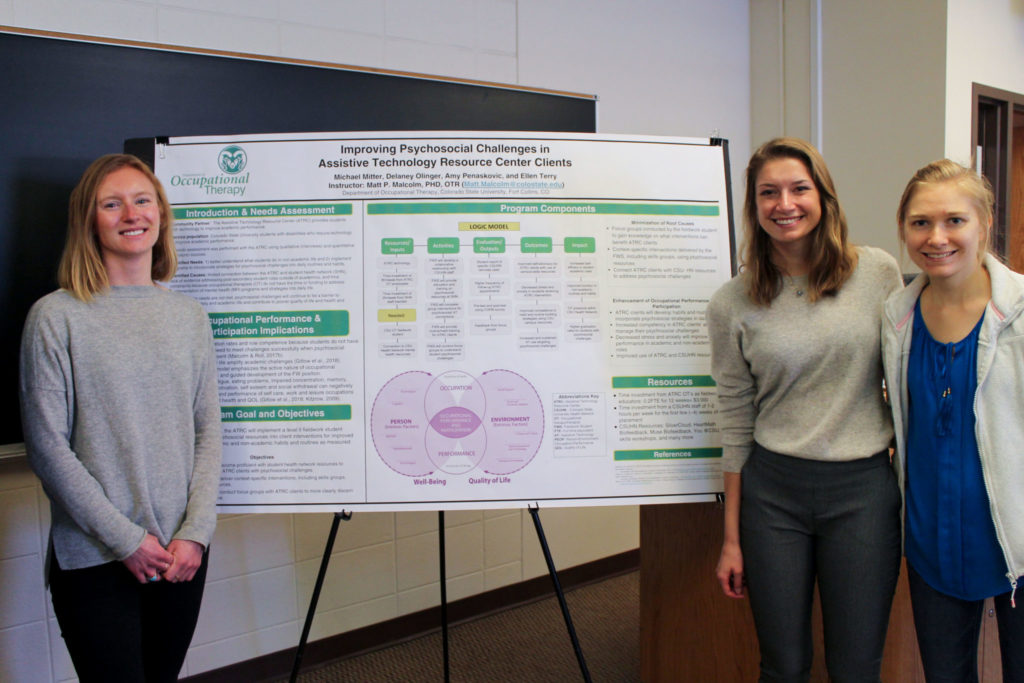“Your work, creativity, and commitment to ‘doing good’ continually impress me,” shared Matt Malcolm, one of the instructors for the Department of Occupational Therapy’s Project Assessment and Development course. “I hope you are as confident about yourself as I am. Your future is bright because of who you are, what you know and what you do.”
Local community opportunities
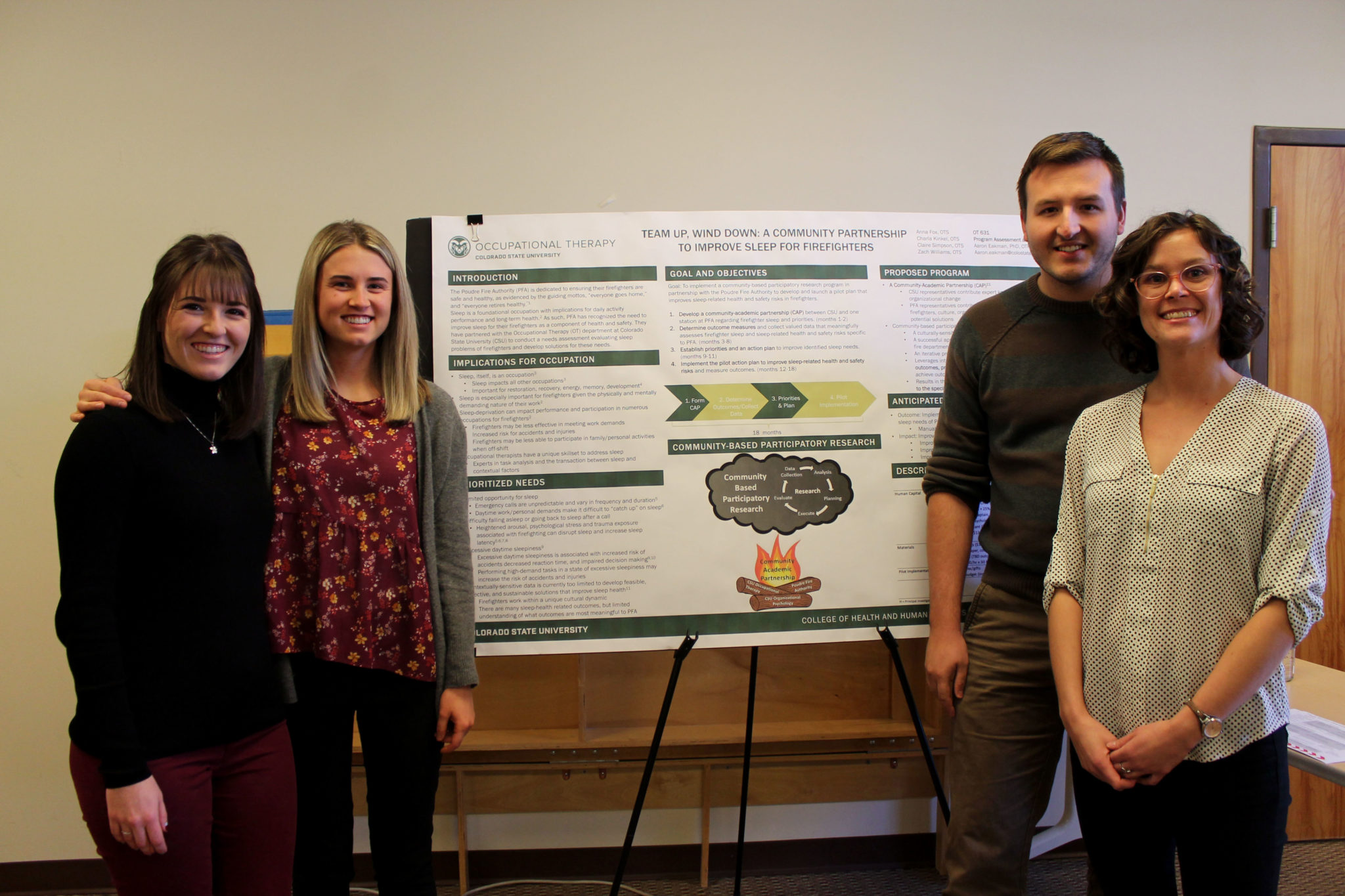
Each year, second-year occupational therapy students at Colorado State University have a unique opportunity to blend their focus of helping people engage in and perform meaningful activities with local community organizations during their semester-long projects.
This year, students worked on these projects addressing a variety of needs including those within the homeless population and those affected by brain injury suffering from opioid misuse as well as sleep deficits encountered within the CSU student body and local firefighters, to name just a few. Students appreciated learning from these experiences by partnering with local organizations including the Murphy Center, MINDSOURCE Brain Injury Network, CSU Health Network and Poudre Fire Authority. This is what two students said about their experiences:
- I am grateful for the opportunity to work as a team and create innovative solutions that serve the needs of our Fort Collins community members. —Kendra Petersen
- This project has taught me so much about the needs facing individuals who are homeless within my community. I am so thankful for this experience and the new perspective I’ve gained. I look forward to carrying this knowledge with me into my future career as an OT! —Brooke Gratza
In addition, two groups partnered with UC Health Poudre Valley Hospital. One group focused on primary palliative care services and other on the neuro intensive care unit patient population. Others focused within the CSU campus addressing bathroom accessibility and one looked at psychosocial challenges that clients who use assistive technology may face. Another group of students created a survey to track subjective health perspectives of food pantry users. One student said the following about her experience:
- This experience has provided me not only with the knowledge and skills to assess for a need and do something about it, but I am now familiar with how palliative care fits with occupational therapy to promote independence and quality of life. —Emmy Steele
Another group worked on expanding a project called Moving Through Parkinson’s in collaboration with CSU’s music therapy program and created a home-based video series to promote carryover of skills at home for people who experience Parkinson’s disease. Others worked with law enforcement officials regarding the unique needs that individuals with brain injury may experience. One student shared the following about her experience:
- It has been really neat to learn more about brain injury as well as law enforcement and try to help these two groups through increasing awareness about common symptoms of brain injury. The end goal of this project is very meaningful as we hope to help each of these groups of people better be able to participate in their daily occupations. —Rachel Sipes
Students are thankful for the collaboration with each community partner and the learning experience that it provided throughout this course. At the conclusion of the semester, community partners were invited to view the students’ work as they presented their posters in the occupational therapy building on the CSU campus.
Student poster presentations
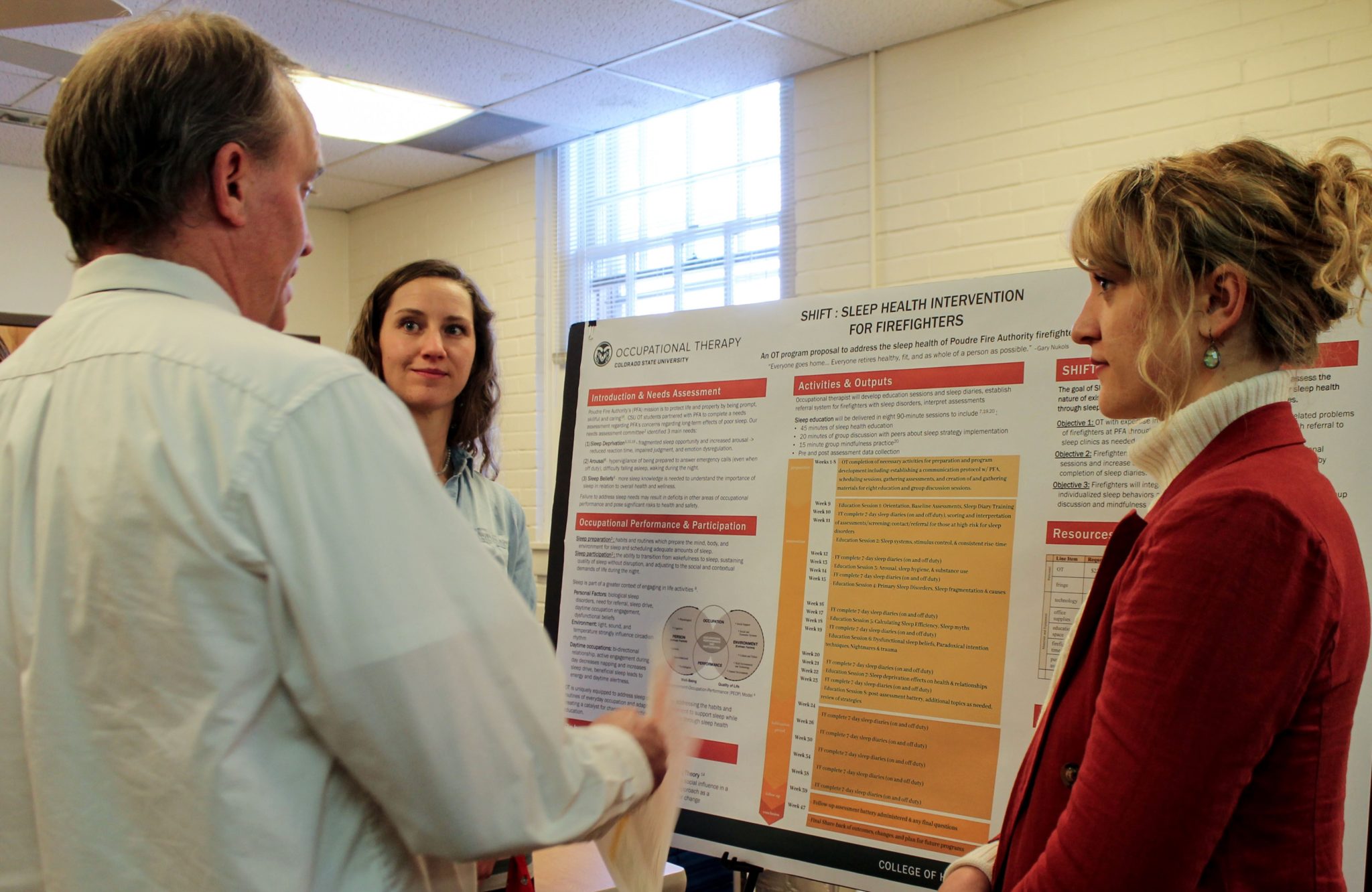
“Finding Champions: Supporting the Use of Primary Palliative Care Skills in Inpatient Rehabilitation”
Amanda Beaton, Jenn Boswell, Emmy Steele, Ashleigh Tarango and Terah Perran
Instructor: Natalie Perkins
“OT for Hope: Addressing Needs of Fort Collins Homeless Community”
Kendra Petersen, Emily Vaughan, Susan Riesett, Mia Routh and Brooke Gratza
Instructor: Natalie Perkins
“Moving Through Parkinson’s: Videos to Move By”
Lauren Helbling, Cammy Swab and Cassandra Stevenson
Instructor: Natalie Perkins
“A Model for Accessibility: CSU-OT and Facilities Management Renovate OT Building Restrooms”
Jenna Russell, Sarah Stark, Cassie Navarro and Haley Bruckner
Instructor: Pat Sample
“Brain Injury Crisis Intervention Training for Law Enforcement”
Tara Saideman, Heather Allen, Jessie Cornette and Rachel Sipes
Instructor: Pat Sample
“Uncovering Connections: Brain Injury, Opioid Misuse, and Incarceration”
Rachel Sjostrand, Jolie Surber, Marnie Smith and Stella Hecht
Instructor: Pat Sample
“COG-Neuro: Connecting Outcomes to Growth for Neuro Patients at Poudre Valley Hospital in Fort Collins, Colorado”
Gina Larson, Cassandra Park, Sam Swenson, Caitlin Martin and Nate Haines
Instructor: Matt Malcolm
“Subjective Health Outcomes for Pantry Shoppers (SHOPS) Survey”
Michael Graham, Chad DesMarteau, Hayley Helton and Lindsey Messenger
Instructor: Matt Malcolm
“Improving Psychosocial Challenges in Assistive Technology Resource Center Clients”
Ellen Terry, Michael Mitter, Delaney Olinger and Amy Penaskovic
Instructor: Matt Malcolm
“SHIFT: Sleep Health Intervention for Firefighters”
Alexa Fryer, Kristina Ihrig, Gabrielle Oltman-Reid and Emily Predny
Instructor: Aaron Eakman
“SIESTA: Sleep Intervention and Education for STudent Achievement”
Ben Zentner, Haylee Candray, Natasha Bayless, Kristina Nguyen and Stephani Long
Instructor: Aaron Eakman
“Team Up, Wind Down: A Community Partnership to Improve Sleep for Firefighters”
Anna Fox, Claire Simpson, Zach Williams and Charla Kinkel
Instructor: Aaron Eakman
The Department of Occupational Therapy is part of CSU’s College of Health and Human Sciences.




